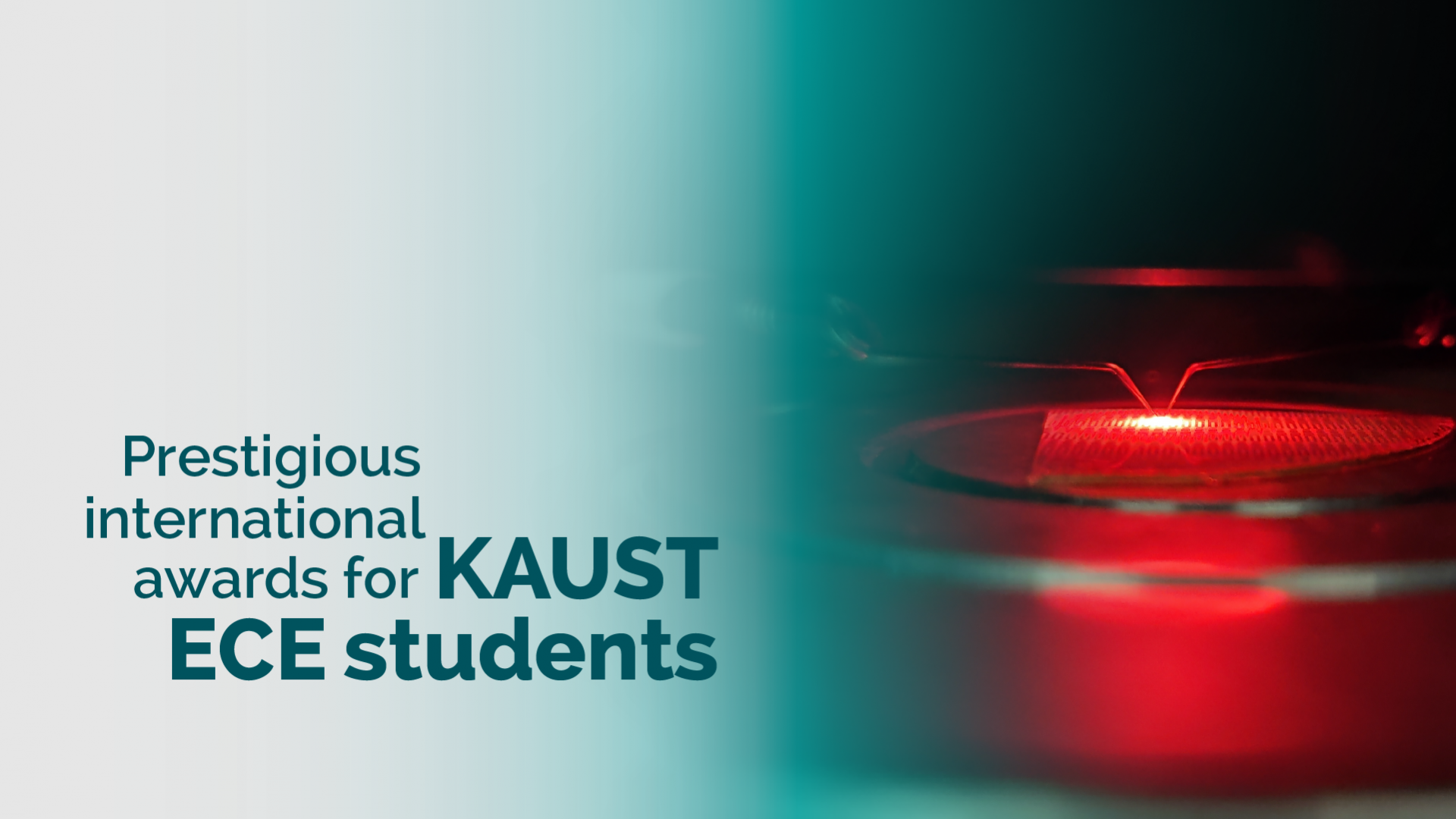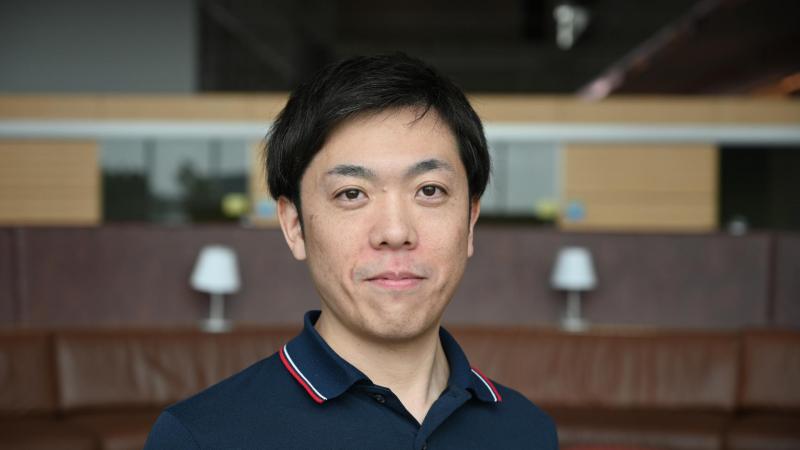By David Murphy
Pavel Kirilenko receives the JSAP Young Scientist Presentation Award
KAUST alumnus Pavel Kirilenko recently won the Japan Society of Applied Physics (JSAP) Young Scientist Presentation Award for a first-authored paper on novel micro-light-emitting diodes (LEDs) published in Applied Physics Express.
Kirilenko’s paper, titled: "InGaN-based green micro-LED efficiency enhancement by hydrogen passivation of the p-GaN sidewall," was recognized by the JSAP for its exceptional contribution to the field of applied physics, including semiconductors. The awards are presented to only ten papers out of hundreds submitted in 2022, making it an extremely rare honor.
According to the JSAP, the Young Scientist Presentation Award is given to: “young members who have made excellent presentations at the Japan Society of Applied Physics Spring or Autumn Meetings that will contribute to the development of applied physics.” The 71st JSAP Spring Meeting 2024 will be held from March 22– 25 in Tokyo, Japan.
The awarded paper reported a unique hydrogen passivation method to suppress sidewall leakage current. It is the opposite of the thermal annealing method developed by Professor Shuji Nakamura (2014 Nobel Prize laureate) for hydrogen removal from magnesium-doped (Mg) gallium nitride (GaN) layers.
Improving the efficiency of micro-LEDs
Micro-LED displays are expected to represent the future of electronic displays with significant energy savings. The key point of their development is achieving efficient indium gallium nitride (InGaN)-based red, green and blue (RGB) micro-LED arrays. The micro-LED arrays have a mesa structure of several micron grooves around each LED. By filling the trench with light-shielding material, light diffusion is suppressed and clear, which results in well-defined images.
However, a significant issue is the sidewalls of each LED provide leakage current paths. Micro-LEDs made from InGaN RGB can be affected by this leakage current, which reduces their efficiency.
Together with his colleagues at the KAUST Energy Conversion Devices and Materials (ECO Devices) Laboratory (PI: Professor Kazuhiro Ohkawa), Kirilenko developed a low-temperature hydrogen passivation method using plasma. This method is particularly useful for suppressing sidewall leakage currents for all InGaN-based RGB micro-LEDs.
“With this research, I succeeded in increasing the efficiency of micro-LEDs by 2.6 times,” he noted. Our opposite method is to introduce hydrogen into the semiconductor and make it more resistive again.”
“This hydrogen passivation method was initially developed at the ECO Devices Laboratory with Professor Zhe Zhuang (an ex-postdoctoral fellow at KAUST). Its first application was mesa-less micro-LEDs. However, mesa structures are essential for display applications. In this instance, I have applied this hydrogen passivation method to a mesa structure.”
‘It doesn’t work until it works’
Kirilenko—who recently obtained his Ph.D. in Electrical and Computer Engineering under the supervision of Prof. Ohkawa—has taken up a postdoctoral fellow position at the Tyndall National Institute at University College Cork, Ireland.
As someone who “enjoy[s] the clear manifestation of the physical phenomena in engineering tasks,” he is acutely aware of maintaining an overall perspective regarding his research. A desirable and impactful result that takes time and effort is of chief importance to him.
“It is essential for me to recognize the big picture, in which even the single recorded experimental set has its own place. This way, not only can I perceive why the results are the way they are, but I can also predict the range of applicability of the proposed idea. At KAUST, such a multi-level approach is encouraged and vigorously pursued.
“For my fellow young researchers who may read this, my work took me ten attempts over two weeks to achieve satisfactory samples for this experiment. Simply put, sometimes it doesn’t work until it works,” he concluded.
ICNS-14 Best Student Award for Cesur Altinkaya
Cesur Altinkaya, a Ph.D. student in the KAUST Energy Conversion Devices and Materials (ECO Devices) Laboratory under the supervision of Professor Kazuhiro Ohkawa, received a Best Student Award at the 14th International Conference on Nitride Semiconductors (ICNS-14).
Held from November 12–17, 2023, in Fukuoka, Japan, ICNS-14 presented high-impact scientific and technological advances in materials and devices based on group-III nitride semiconductors. During the event, a series of in-depth, independent sessions addressed the fundamental physics and chemistry behind the critical issues associated with nitride semiconductors.
According to the event organizers, the Best Student Award [was] presented to: “young scientists who demonstrate[d] outstanding achievements in their paper, including abstract and presentation, and [are] expect[ed] to make significant contributions in the nitride semiconductor field.”
“The discussions held at this ICNS-14 define the field’s future direction,” Altinkaya emphasized. “Therefore, it was wonderful being on the stage to receive the award in front of hundreds of experts, engineers and scientists from all over the world. I was proud to see our group’s research, and KAUST recognized at such an important event.”
Establishing a simple, reproducible and stable technology
Developing indium gallium nitride (InGaN)-based red, green, and blue (RGB) micro-LED arrays represents one of the most significant challenges in modern semiconductor design. These devices are essential for the creation of next-generation micro-LED displays. In addition to mobile devices, the displays will be used in augmented reality (AR) and virtual reality (VR) headsets; therefore, the efficiency of InGaN red LEDs is an increasingly pressing issue in the field.
At present, micro-LED displays are considerably more expensive than liquid-crystal displays; as a result, they are not as widely used. The high cost associated with adopting indium gallium phosphide (InGaP) red LEDs is due to their use of two kinds of semiconductor groups. The weak point for integrating RGB LEDs is the lack of efficient InGaN red LEDs.
Altinkaya’s ICNS-14 oral presentation, titled: "InGaN Red LEDs Fabricated by Hydrogen Plasma Passivation," outlined how the KAUST ECO Devices group is solving optical loss processes in InGaN red LEDs. The ECO Devices group has grown InGaN red epitaxial wafers to counter the visual loss issue using a metalorganic chemical vapor deposition (MOCVD) system.
“There are two issues to be solved for efficient red LEDs. Their sidewalls have leakage currents. The underneath area of metal contacts has low light extraction,” he noted. “I electrically deactivated those two areas by hydrogen passivation. Since only efficient areas work as an LED, their efficiencies have been improved drastically. Also, I have indicated a better temperature dependence of InGaN red LEDs in light output and peak shift compared to InGaP-based red LEDs.”
Although MOCVD is a well-known technique in industry, growing InGaN red epitaxial wafers is still very challenging. The ECO Devices group is among the few groups worldwide that can produce InGaN red epitaxial wafers using a unique MOCVD process.
Professor Ohkawa created the unique MOCVD system using the KAUST Nanofabrication Laboratory to fabricate LEDs from semiconductor wafers. Research scientist Dr. Daisuke Iida grew InGaN red epitaxial wafers, while Altinkaya and his colleague Pavel Krilenko fabricated the LEDs and characterized the devices.
“It seems that the world is most interested in the development of InGaN red LEDs. Our technology is simple, reproducible and stable and shows enormous industrial application potential,” Altinkaya concluded.




